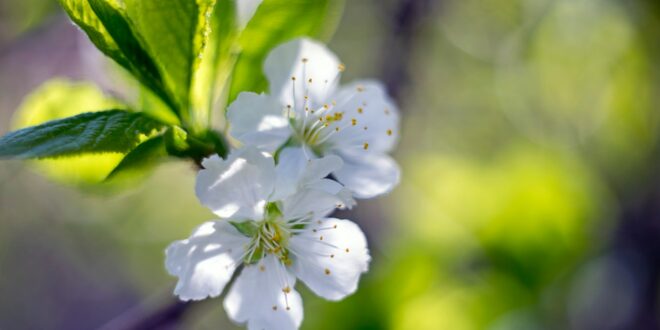There’s nothing more frustrating than a fruit tree refusing to deliver up the goods. If your backyard orchard is misbehaving, it’s very likely blossom (or a lack of it) is to blame. If it is, the problem may be easily solved using the tips below.
Ban the early birds
It’s common knowledge birds help themselves to fruit from our trees, but did you know our feathered friends also delight in chomping through fruit buds and blossom? Some experts believe these tasty morsels hold more nutrition than insects, which may be the attraction.
Buds are often present on fruit-bearing trees long before we are even aware of their development. This, coupled with the fact blossom, especially from prunus (plum family) trees, is one of the earliest flowers in the garden, means hungry birds are often busy destroying potential fruit in the earliest weeks of spring.
So how can you protect your flowering fruit trees from attack?
If you’re just starting out with fruit tree planting (and we’re never too old for this as fruit trees can bear fruit in just 2-3 years), consider espaliering your tree. This keeps it low so it can be easily covered with protective netting. If erecting a free-standing espalier frame feels too difficult or expensive, consider training branches along the railings of your balcony, or on wires strung along a fence.
Alternatively, train your fruit tree into an umbrella shape to keep it low and easy to net. One simple way to do this is to tie bottles of water to young branches to weigh them down. Start with a small bottle (a vanilla essence bottle filled with water is heavy enough to begin with). Tie the bottle to the middle of the branch, where the wood is strong. If you tie it to the end, your branch will be pulled straight down, rather than heading it in a graceful arch (and in any case, the end of the branch is very likely to pruned off at a later stage). In the second season of growth, move onto a small sauce bottle filled with water.
If your fruit tree is already mature, it’s unlikely covering it completely will be a possible (or safe) undertaking. However there’s no reason why you can’t net some of the lower branches if they are within arm’s reach, or can be accessed safely via a strong ladder. Use netting with a mesh wide enough to allow pollinators, such as bees, to get through. The netting can be left in place to protect the fruit as it matures.
Pause as you prune
Pruning is essential if we want our fruit trees to perform, but an inexperienced pruner can easily get carried away and remove too much from branches. This pushes the tree into ‘survival mode,’ stimulating it to produce more wood and leaf at the expense of blossom. When heading out to do your prune, take a guide sheet with you (beginner pruners may like to laminate the page they are referring to, so they can prop it in the branches to refer to as they work).
Check your choices
If an orchard tree consistently fails to produce fruit, but is otherwise healthy, it’s likely it’s blossom is being destroyed by frost, snow, or high winds before being pollinated. Or it may be the blossom is making an appearance but it’s too cold for the pollinators to be out and about, doing their work. Both problems can occur if you live in a part of the country that experiences a chilly spring, and you have chosen the wrong variety of tree for your climate. Do your research thoroughly, and if you do find you have chosen the wrong tree for your region, don’t persist with your option. Plant another, instead. Young fruit trees will happily move home if the shift is undertaken at the right time of the year, and you may be able to gift your first choice to a friend whose home is more suited to it.
Growing your own fruit is so rewarding, and so easy when you know how!










Elizabeth Perry - 11 months ago
Could you please tell me why my worm juice looks like week tea without adding water